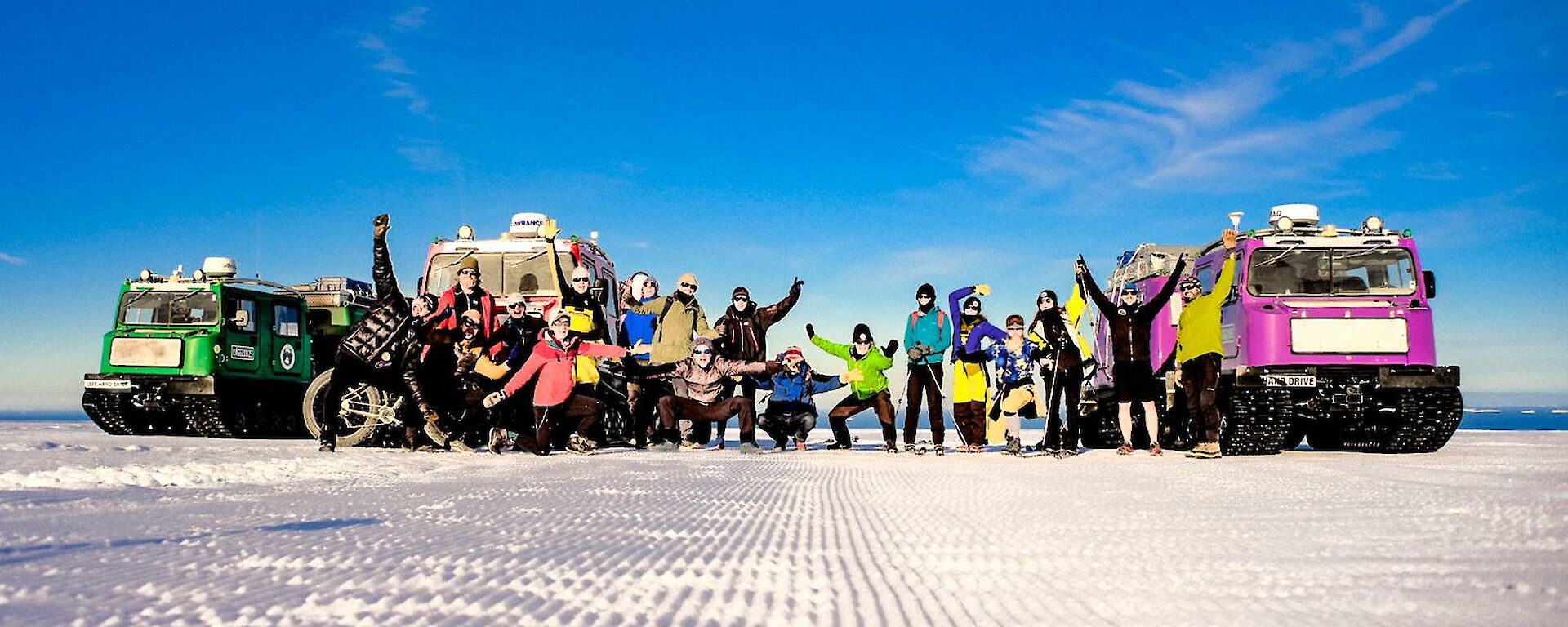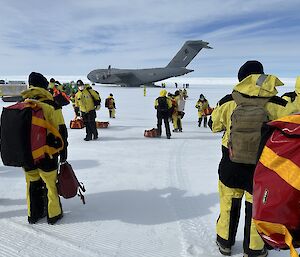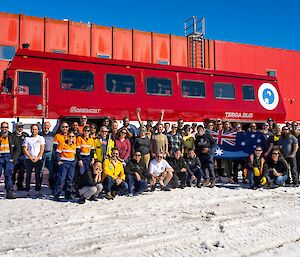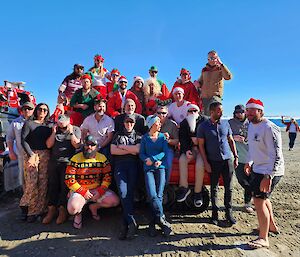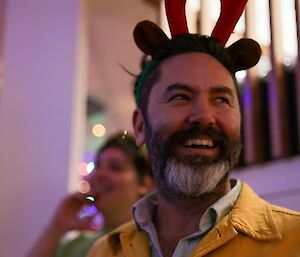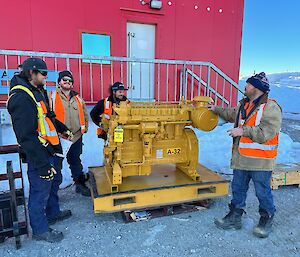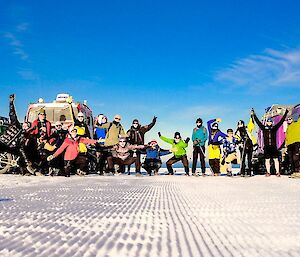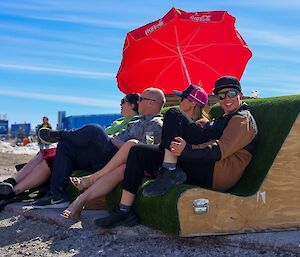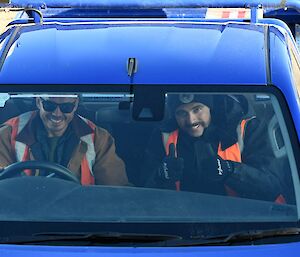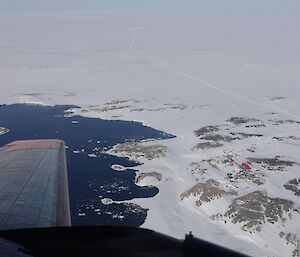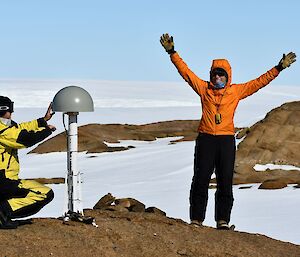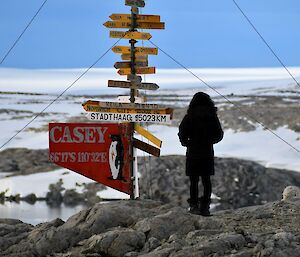144 days.
144 days will be the length of the 2022-23 Casey summer season. From the first (dramatic) flight in via McMurdo bringing some of the Australian Antarctic Program’s (AAP) most experienced ice runway builders to support a tough season at Wilkins, to the last cohort of our life bringing summerers heading home having finally got the CUB (Casey Utility Building) to commissioning and ready to be occupied.
Actually, it’s not quite over just yet. The final small team will head out around 22 March after helping for just a little bit longer at Wilkins to get more snow cleared and at Casey for the winterisation of the station. That gets us to 144 days.
What a season!
Casey’s population hovered around 110 for most of the summer. We maxed out with 124 people when we were graced with both members from the French IPEV program, returning home from Concordia, and the Denman Terrestrial Campaign team both in at the same time. With only 120 beds I was grateful for the Denman team’s patience when we stuck one of them in the hospital ward and another in a cupboard!
Overall, 188 expeditioners visited Casey and Wilkins this summer for at least one night (if my maths are right). I can ramp the numbers up by another 78 when we include the crews and complement of the MPOV Aiviq and the Happy Diamond, our refuel and resupply ships this season, who graced Newcomb Bay out the front of station for several weeks.
In addition to this, we host Australia’s intercontinental aerodrome at Wilkins, 75kms up the hill from Casey. The team there will have managed an impressive 13 intercontinental flights from Hobart this season hosting both the AAD chartered A319 “Snowbird” and a number of the RAAF’s C-17A Globemasters – amazing aircraft which are such great contributors to the AAP. There would easily be over 100 more people who manage to stop through for a few hours at Wilkins as crew and support on those flights.
But that’s only the people movements. There have been two highlights of the season for me: the people and the outcomes.
The People
We have had an exceptional season at Casey shaped by the supportive and inclusive community we have built. Community isn’t something that just happens, you have to work at it. We started conversations early about the pressure points we would face – limited resources including alcohol, bandwidth, privacy and space; active risk management and mitigation; and a highly regulated environment which would be both our workplace and our home. In acknowledging these challenges, we arrived aware that it wasn’t just ‘me’ going to Antarctica, rather it was ‘us’ and for us to be successful we would need each other. In reading people’s reflections in their Expeditioner Performance Report (EPRs) and, more emotionally, in watching the farewells, I can see we found this support in each other.
The AAP has become a place where we are asking hard questions about shaping our culture to be the place we want it to be, both for people and for the cultural environment. There’s no doubt we’ve still got work to do. I’ve learned many lessons this season and still missed a few I’m sure. I am a believer in fighting for the community you want to live in, and I’ve certainly had to do that a few times this season. I’ve been proud to do it in recognition of the life-changing experience this season has been for many of us, just as my first season in Antarctica was in the year 2000.
The greatest moments in this incomprehensible location are actually the smallest – the banter around the dinner table, the smile of the fridgie when he got the freezers commissioned after two years, the celebration of a hundred Christmas orphans, the humour of the crowd when I wore my yellow short coat and actually had a wine, the euphoria of singing Salsa du Demon and Gangnam Style on the karaoke dancefloor. Truly, this amazing community we have fostered will always be the highlight.
The Outcomes
With a team fully supportive of each other, the outcomes flowed, even if we weren’t quite as productive as we can be in more clement climes. And so here’s a partial shopping list of our outcomes and successes:
- The invisible task which never ceases is all the ongoing maintenance which people contribute to, and is the majority of our work over winter. Every group on station has to contribute to this work and they do an amazing job.
- The Traverse and Million Year Ice Core (MYIC) deployed, successful in reaching Little Dome C and successful in returning with ice core samples!
- The Denman Terrestrial Campaign set-up team successful in improving Edgeworth David Base in the Bunger Hills, ready for the main science campaign over the next two years. The RAAF supported with an airdrop of building materials and camp supplies and we were able to stockpile fuel supplies for next season.
- The ICT uplift program was successful in installing a 4G network over Casey, establishing a redundant satellite link and upgrading the existing ANARESAT, and well as myriad other tasks under the radar.
- All of our expeditioners survival trained by our team of Field Training Officers (FTOs) which has enabled us to get off station and spend amazing nights with new friends in the field huts around the Windmill Islands. While we still have day jobs to fill down here, being survival trained has allowed us to actually live the amazing weekend camping trips you see on the glossy brochures. When vehicles have been available … and we’ve given three days’ notice, of course.
- The Casey Utility Building (CUB) commissioned for use including new food freezers and new recreational facilities including gym, spa and sauna coming online. This is a fantastic effort after many years on this project including rehabilitating the site, decommissioning the old ‘chocolate wheel’ sewerage plant, and getting services aligned.
- A new sewer outfall line installed supporting the upgraded station waste water treatment plant.
- A new culvert installed outside the Main Power House which sets the conditions for site services upgrades over the next several years.
- Countless metres of snow and blizz tails and ice cleared across station.
- 60 intracontinental flights facilitated by the Casey Ski Landing Area with big thanks for Kenn Borek Air (KBA) for their continued participation in our Program.
- On top of the 13 intercontinental flights, the crew at Wilkins has achieved an eye watering 11,259km of dozer work to manage the largest snow accumulation load ever seen over the aerodrome.
- 1,016,000 litres of Special Antarctic Blend (SAB) diesel pumped into our fuel farms in a safe and incident free operation.
- 1,286,927kgs of cargo delivered, including new tractors, food, a Hilux now called White Lightning, and enough toilet paper to get us through an entire pandemic!
- 455,558kgs of cargo backloaded for return to Australia.
- The replacement of water tank #1 which is now fully plumbed in and the water tastes great!
- Some incredible artwork, furniture and hair styles offered which generated an amazing $51k pledged to the charities Levi’s Project, the Black Dog Institute and the Antarctic and Southern Ocean Coalition from our summer auction.
And of course science, science, science:
- Citizen scientists took penguin rookery photos of Emperor penguins and Adelies, as well as collecting moult feathers and scat samples.
- Securing Antarctica’s Environmental Future (SAEF) investigated our amazing moss beds using both the old methods (humans) and new methods (Artificial Intelligence) and mapped our nearby Antarctic Specially Protected Areas (ASPAs).
- The Australian Centre for Excellence in Antarctic Science (ACEAS) successfully trialled the Rapid Acquisition Isotope Drill (RAID).
- Geophysicists upgraded seismic arrays to investigate how the icecap is moving over the bedrock and installed new devices across the region which will support future projects.
- CSIRO maintained their clean air sampling laboratory.
- The Bureau of Meteorology conducted satellite systems upgrades and trialled Starlink.
- Not to mention the range of ongoing projects which I’m still (not even yet) learning about.
- And the Remediation team, including two of Casey’s longest serving citizens – Johan and Bec with 25 seasons between them since 2010 – kicked all sorts of goals with sampling across the region, water treatment, UAS data capture and ongoing biopile management.
All the while we were supported by our mechanical team keeping vehicles moving, the chefs keeping bellies full, the Super Slushies keeping our souls nourished, the Comms Techs and operators keeping us in touch with home and each other, the BOM staff keeping an eye on the weather, the folk in Kingston who’ve put this season together, and many others working to make this Program as successful as it has been.
There is most certainly plenty of stuff I have missed.
It’s no surprise they (I) call Casey, the place to be! (#Caseyplacetobe #placetobe)
I want to thank everyone who has played a role in this summer season. Most importantly, I want to thank all our families and friends back home who have supported the expeditioners to come down here. It’s not easy to be separated and there are still some hard days ahead with more farewells and reunions which can both be challenging. Please, speak to a friend, use the EAP and get back out into nature – these will all help in challenging times.
Antarctica is an important place. Our presence here enables humanity’s ever-developing understanding of this unique wilderness. I’m glad I was able to share it with you all.
- Ben Patrick, Casey Station Leader 2023
76th Australian Antarctic Program

